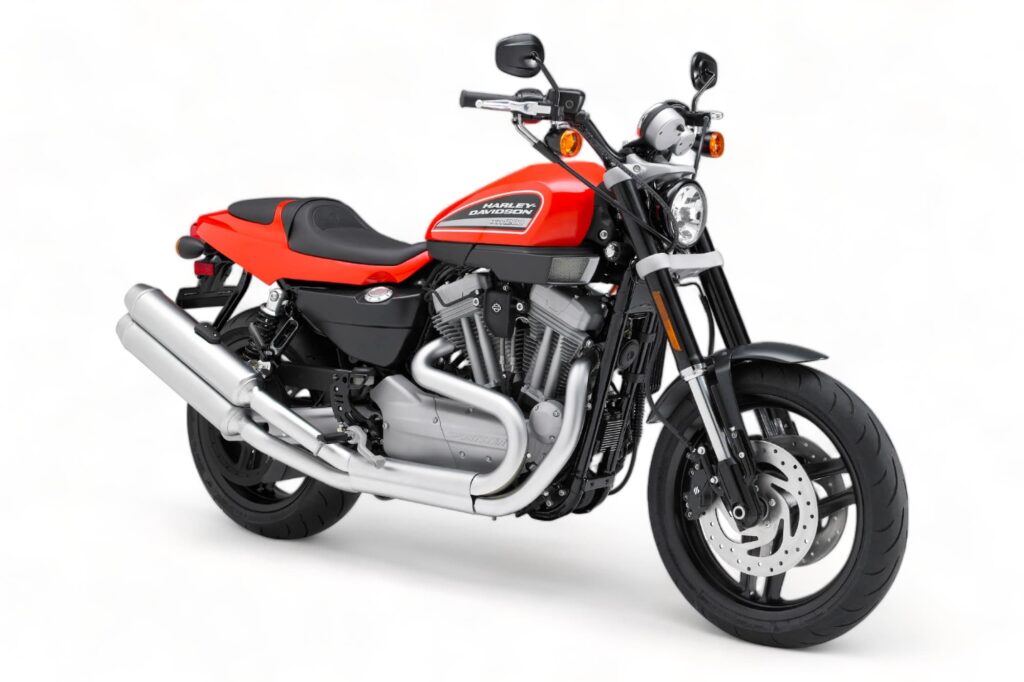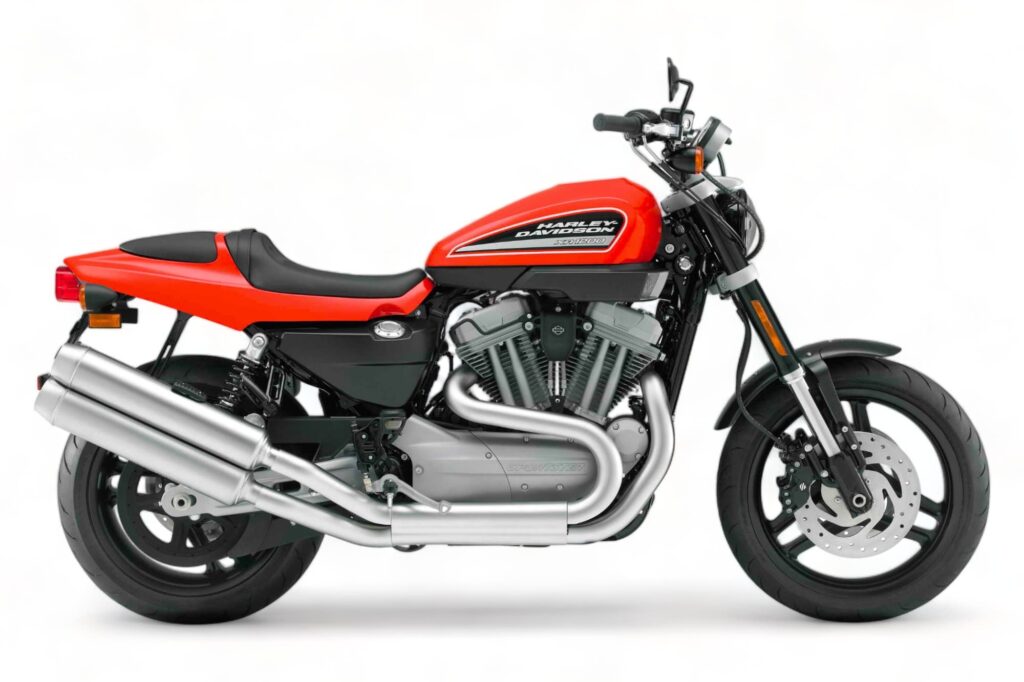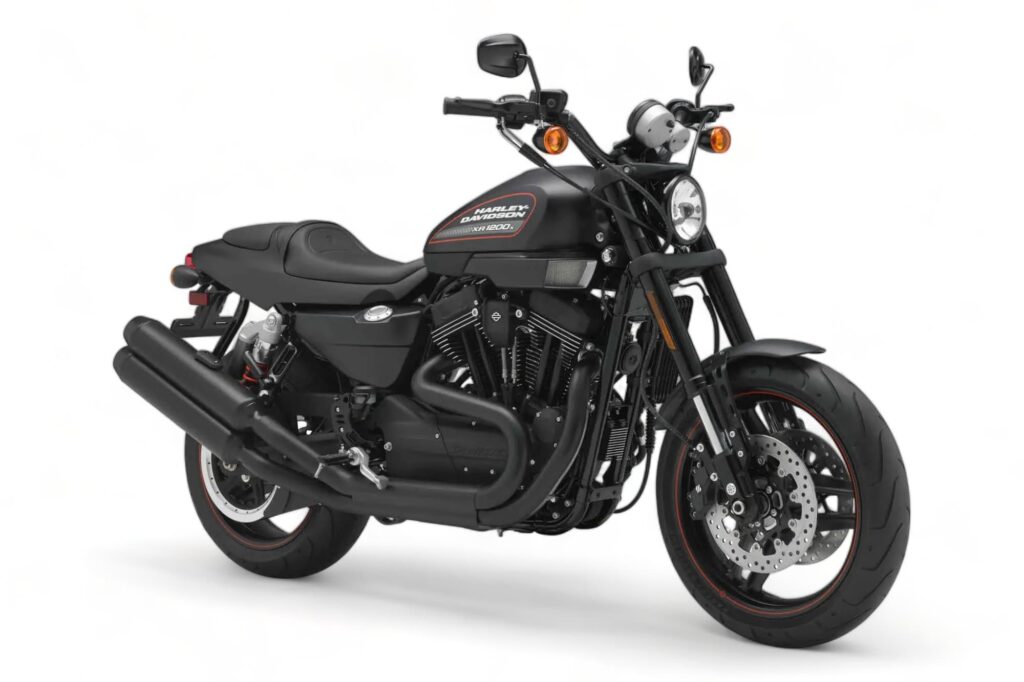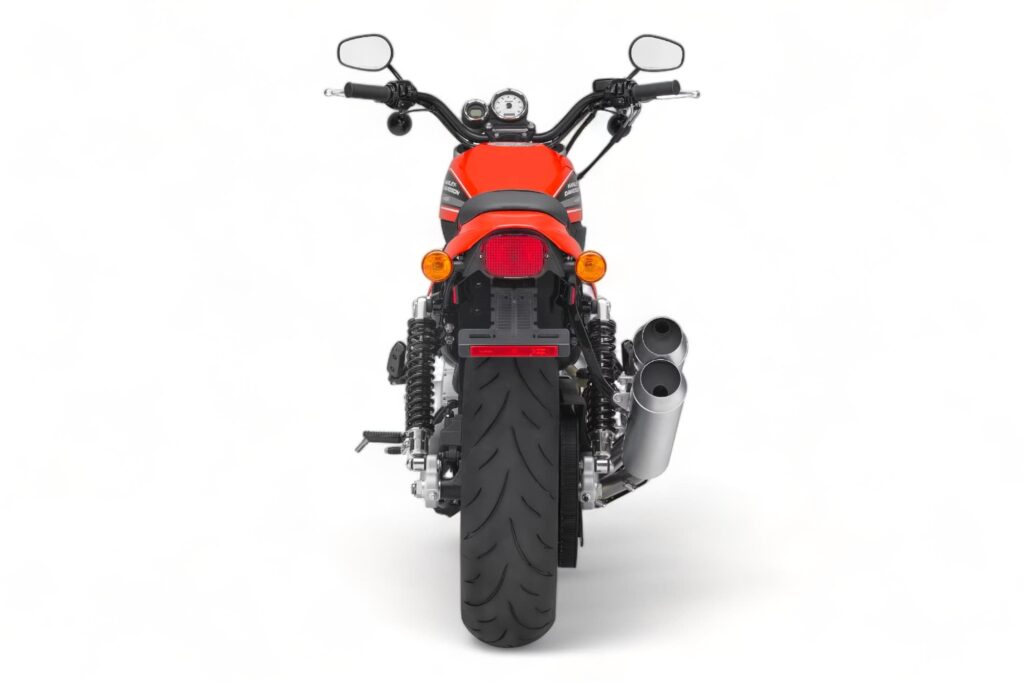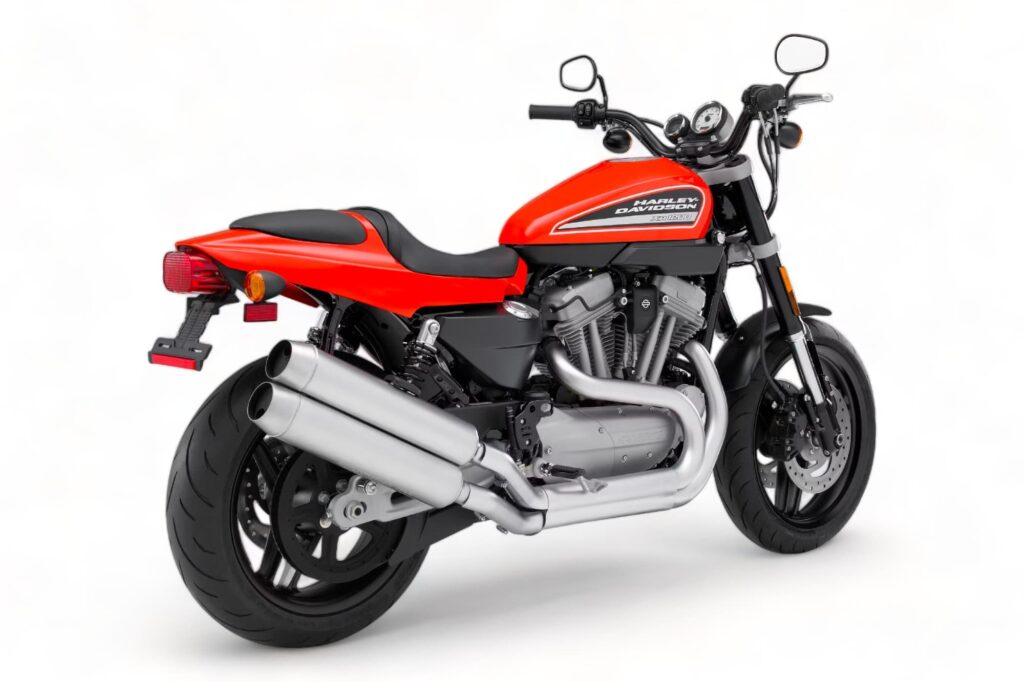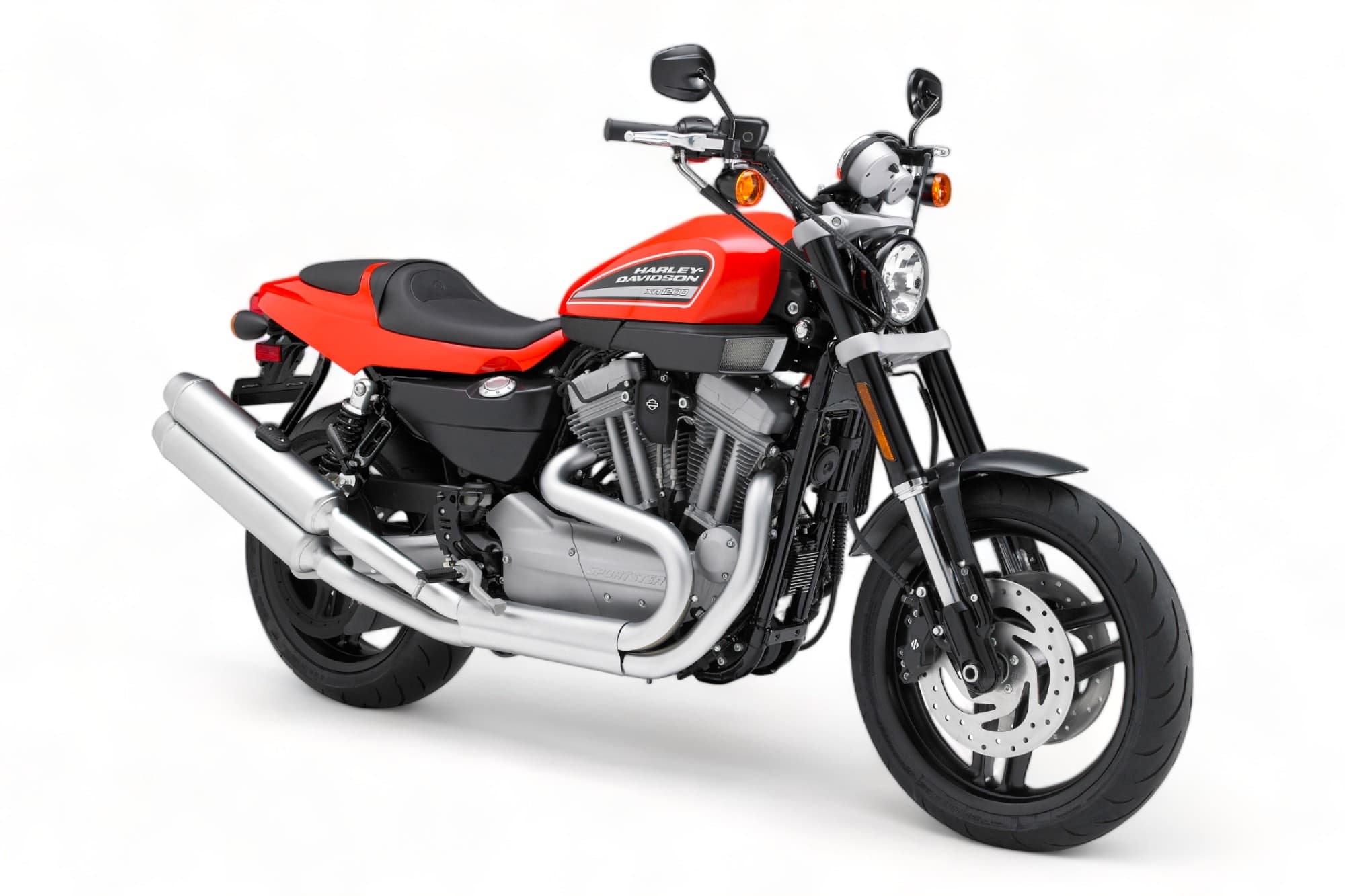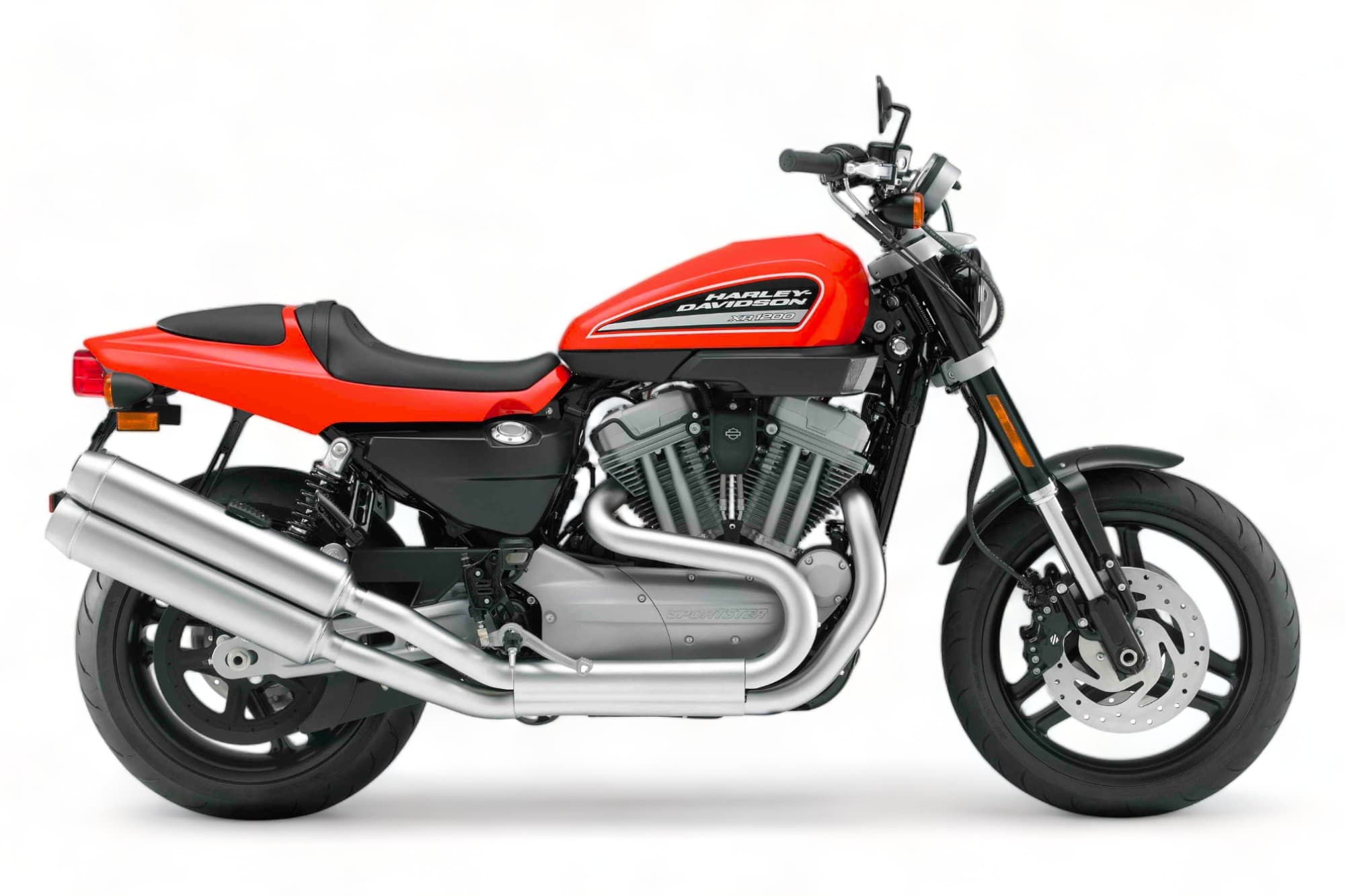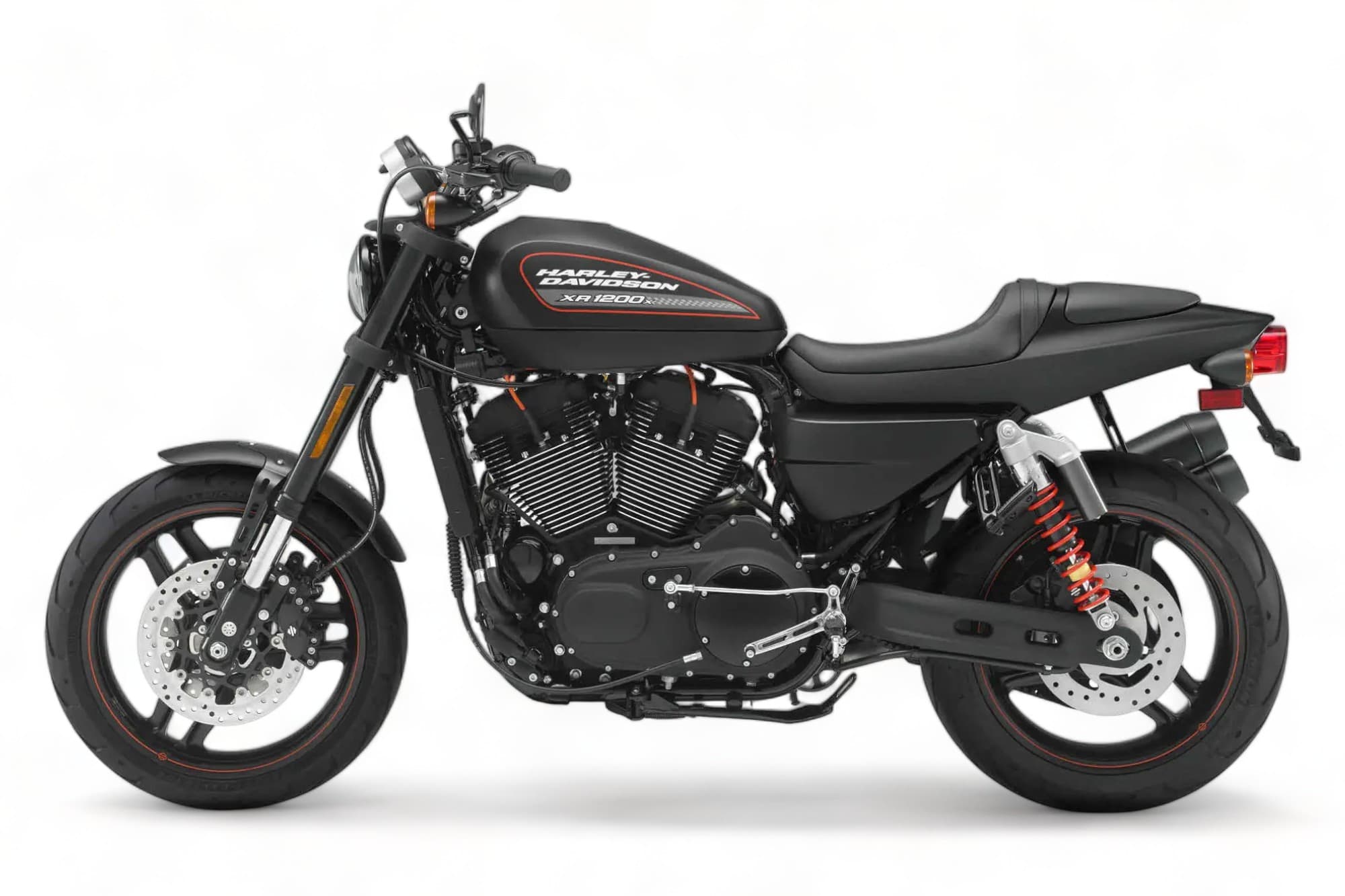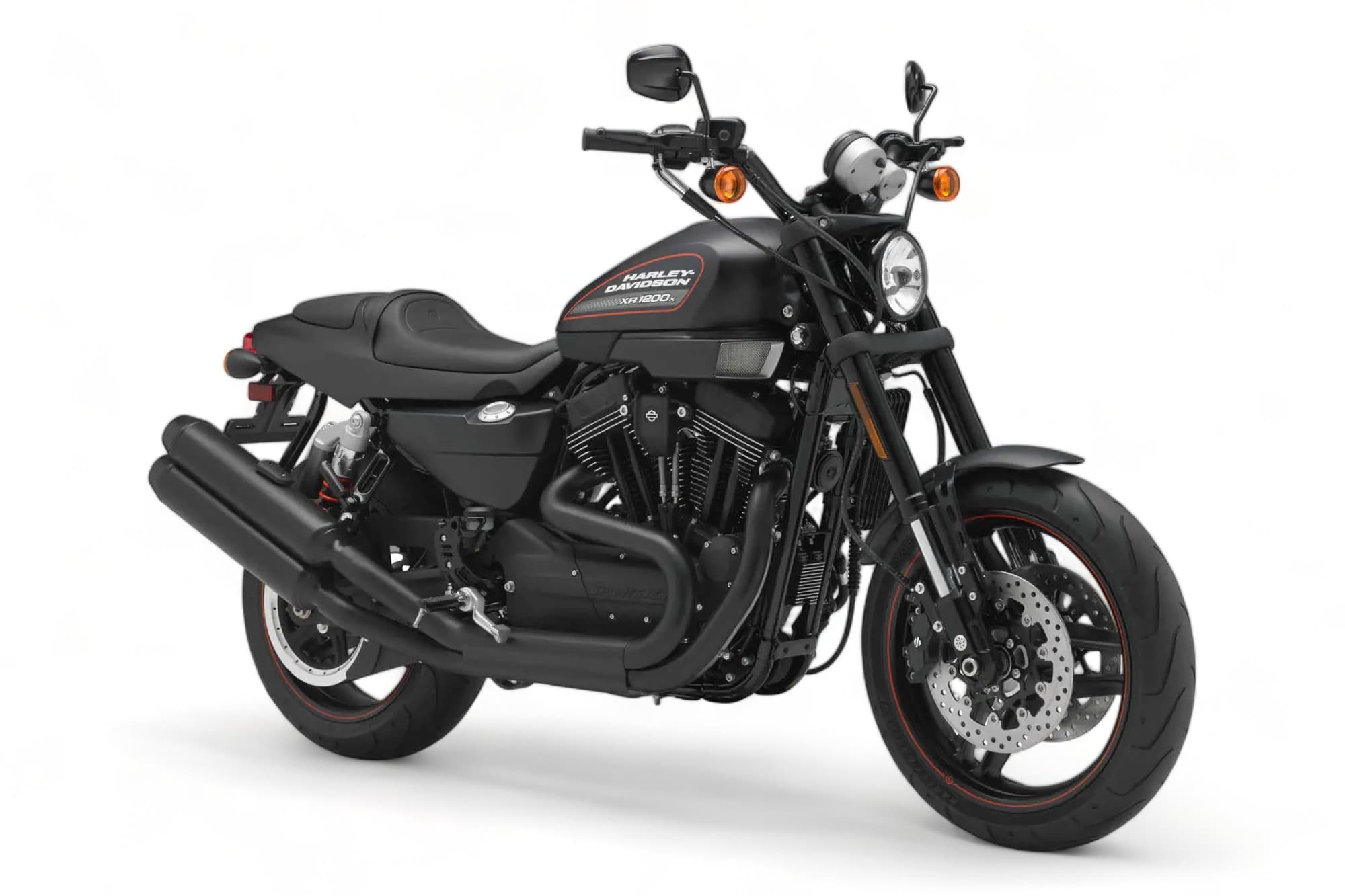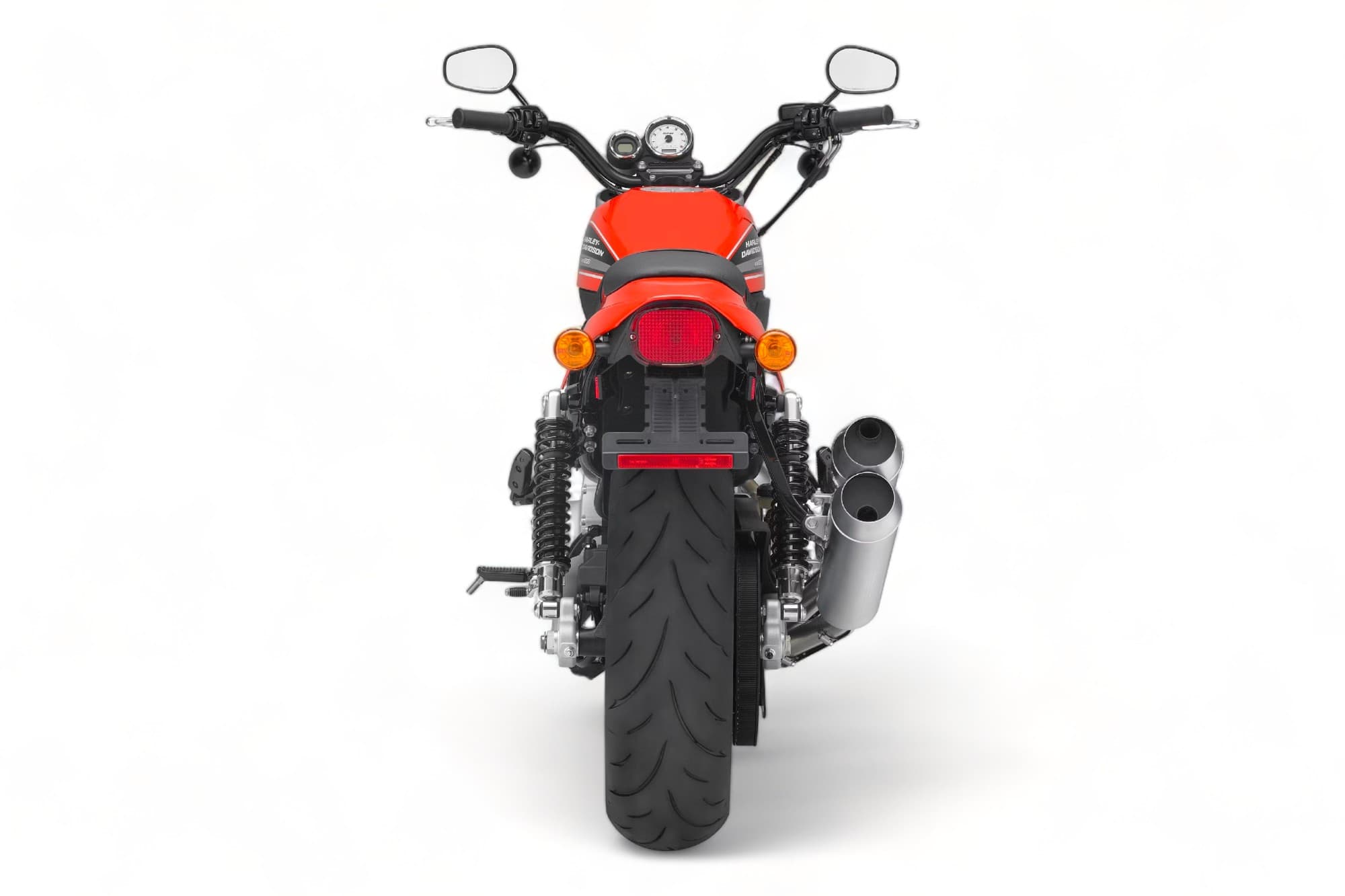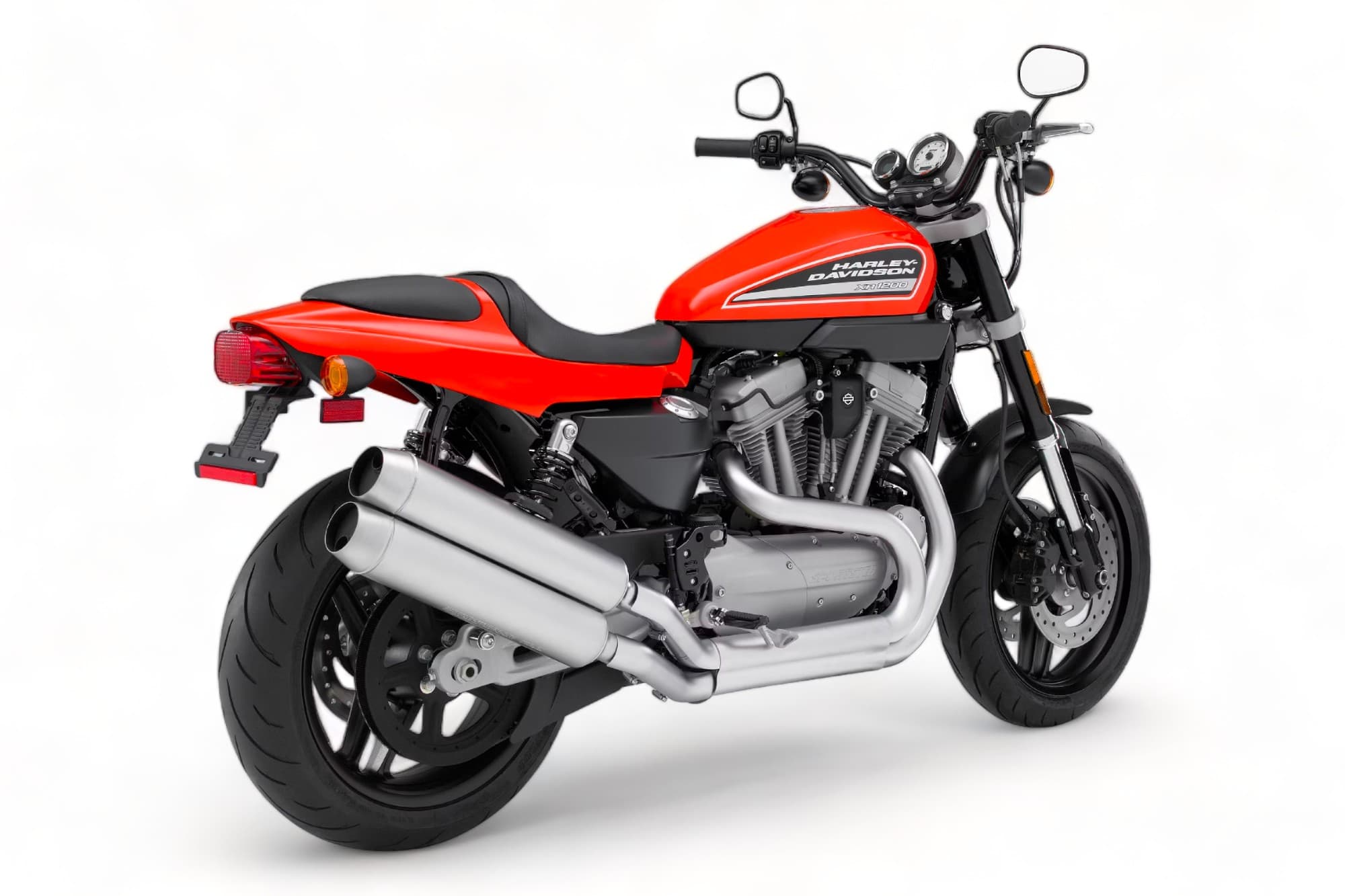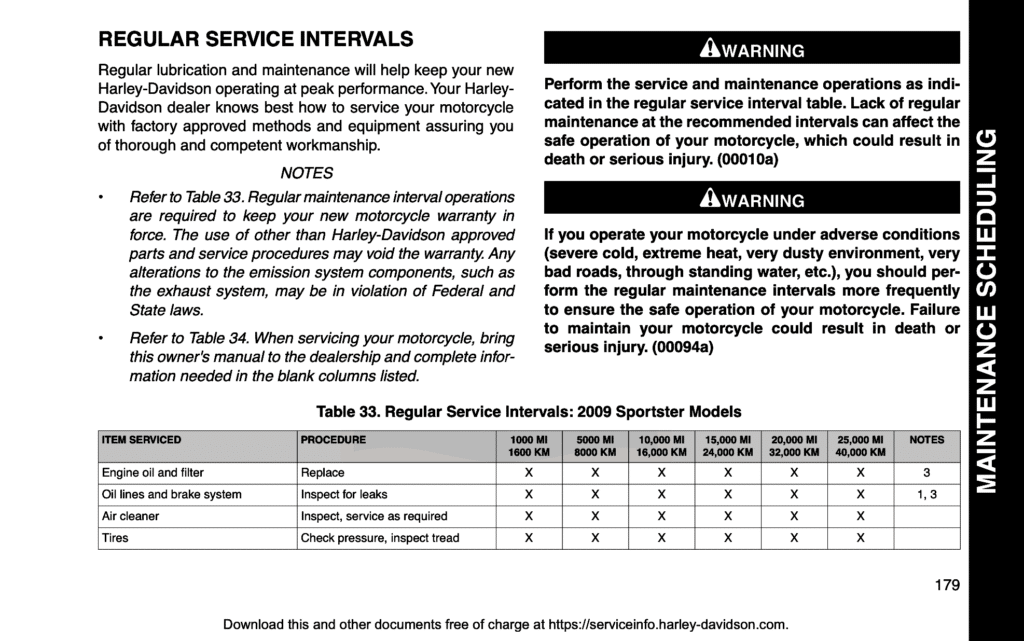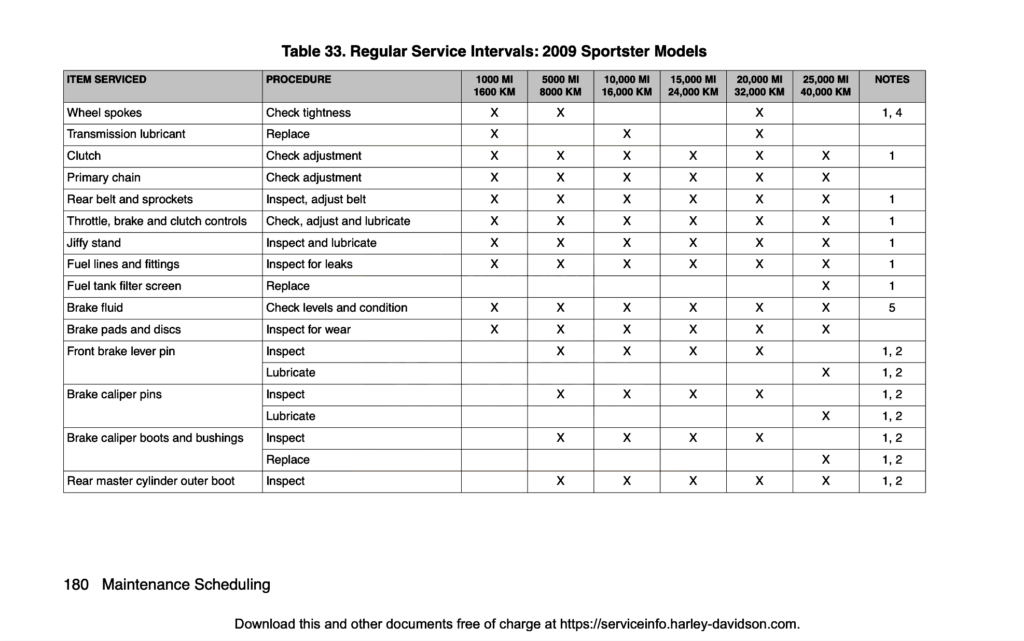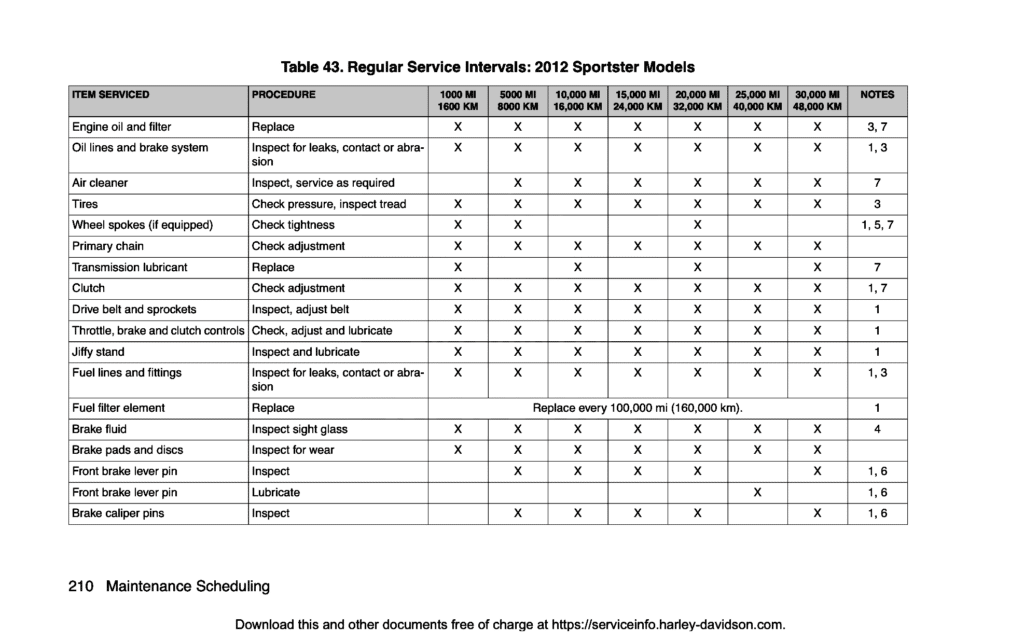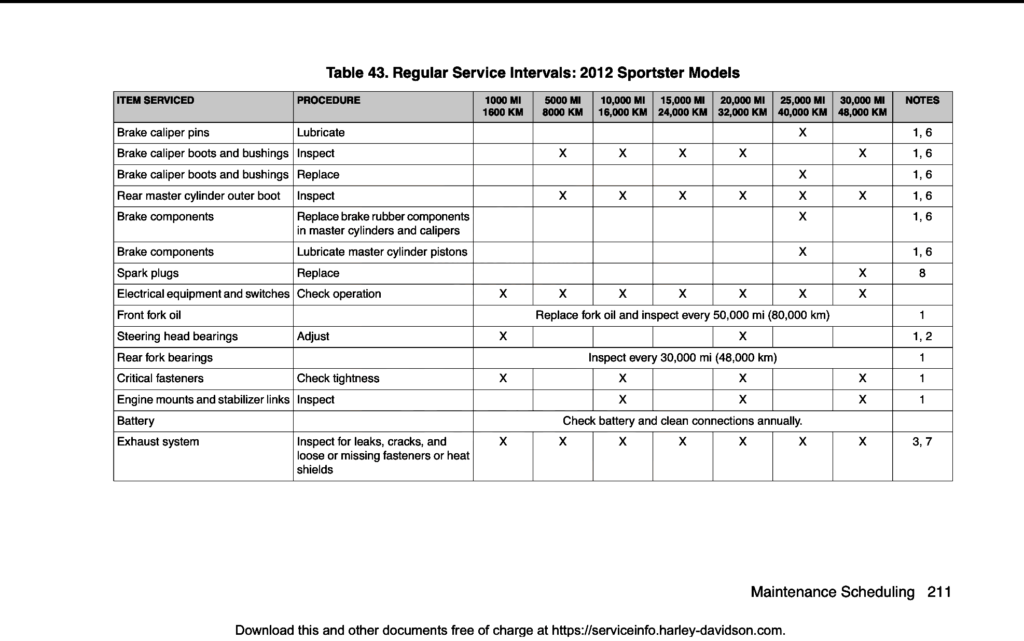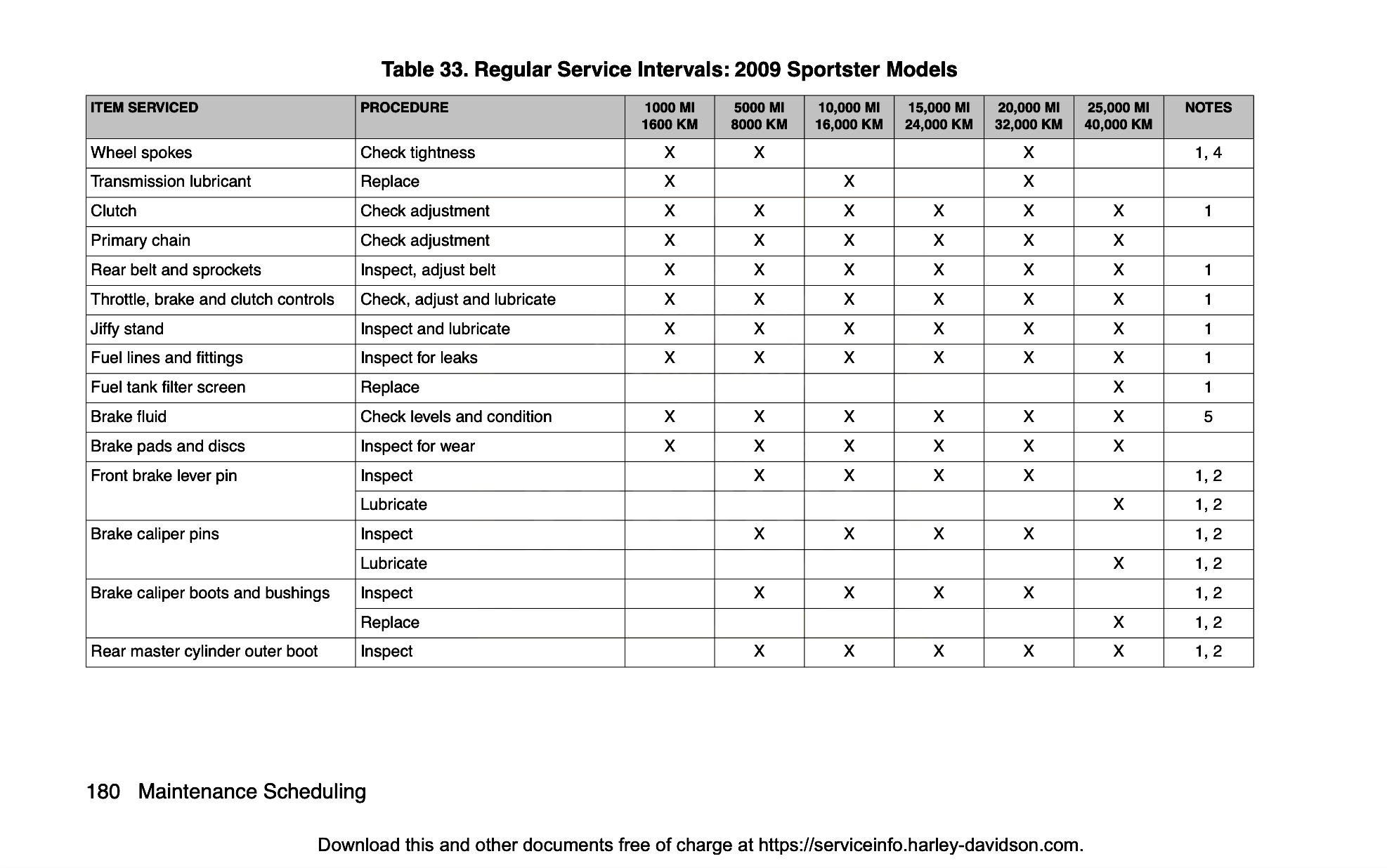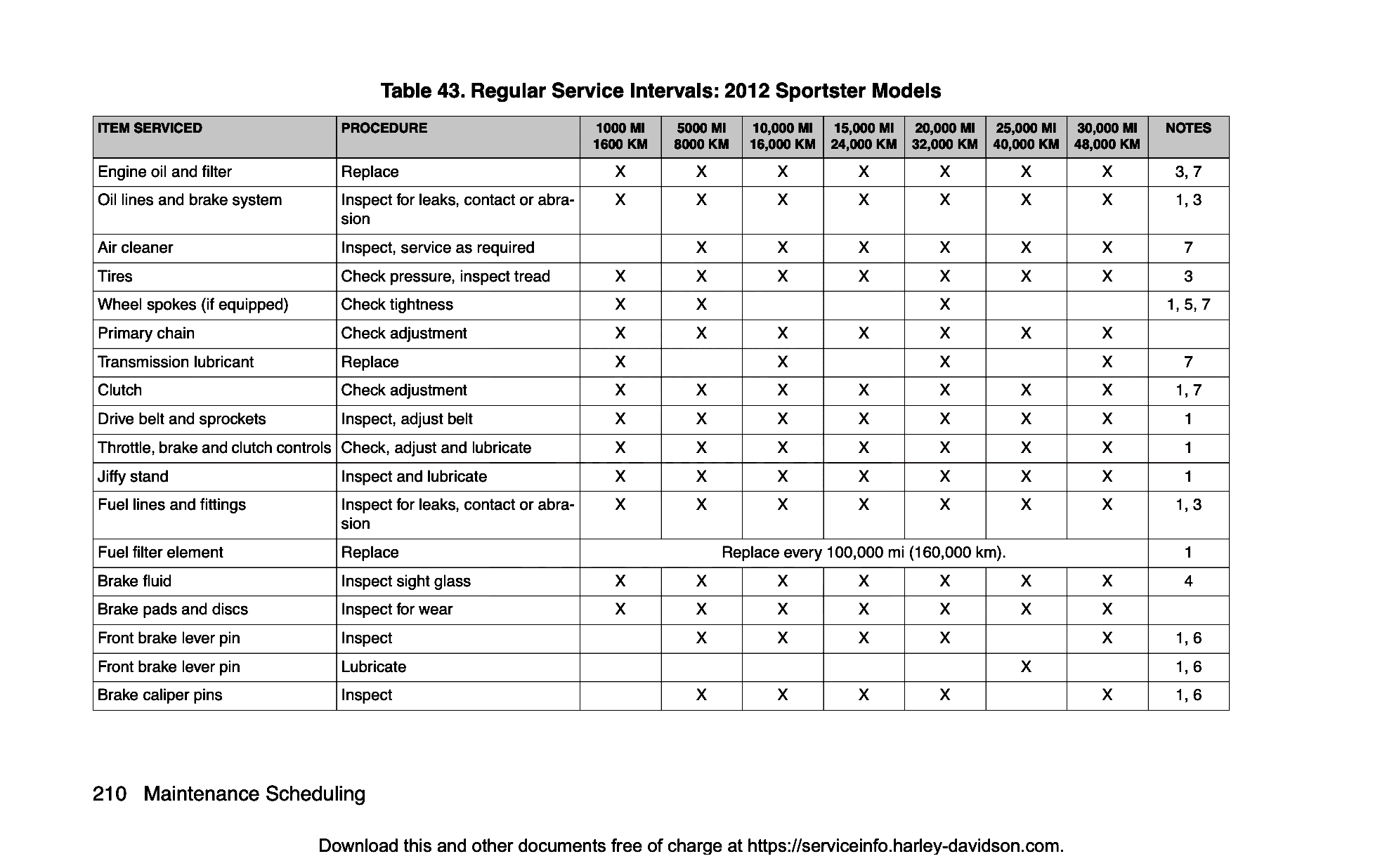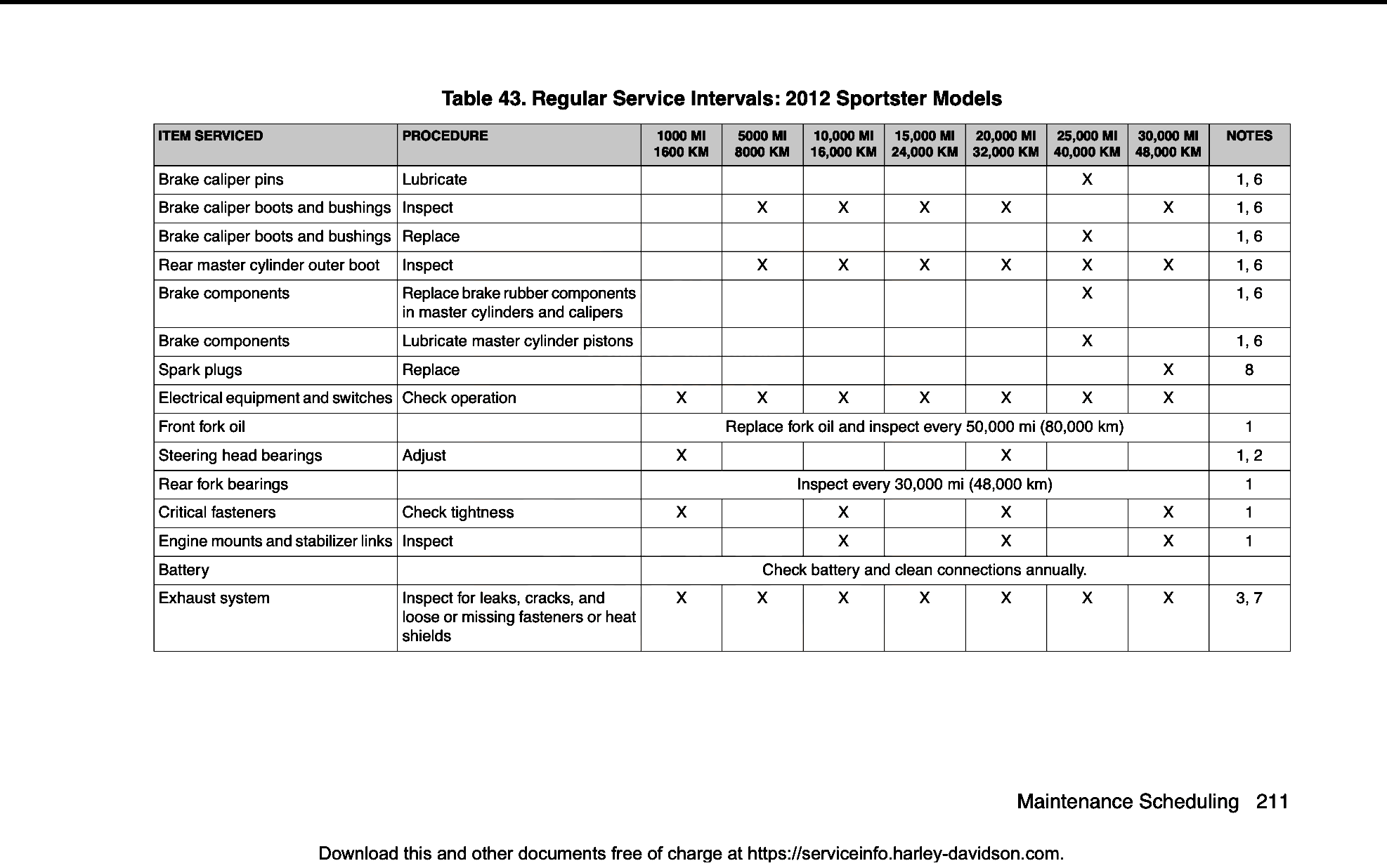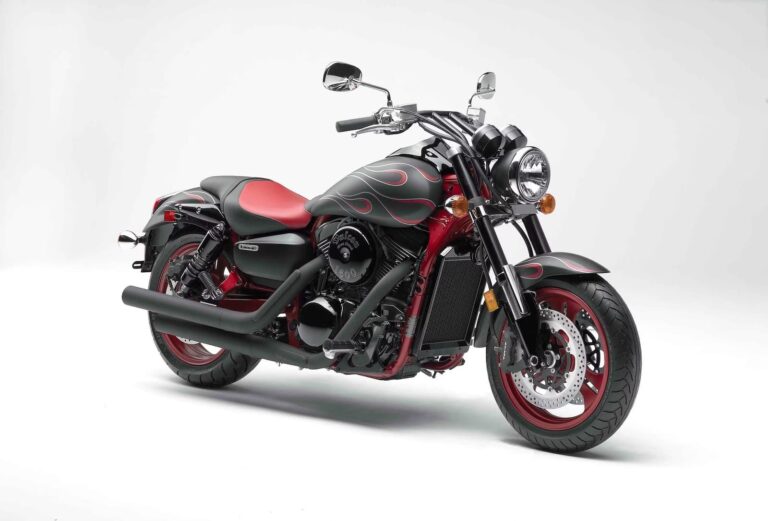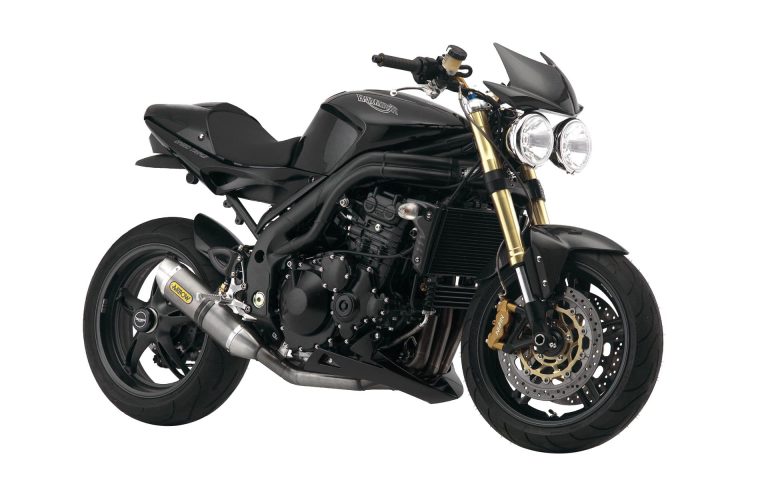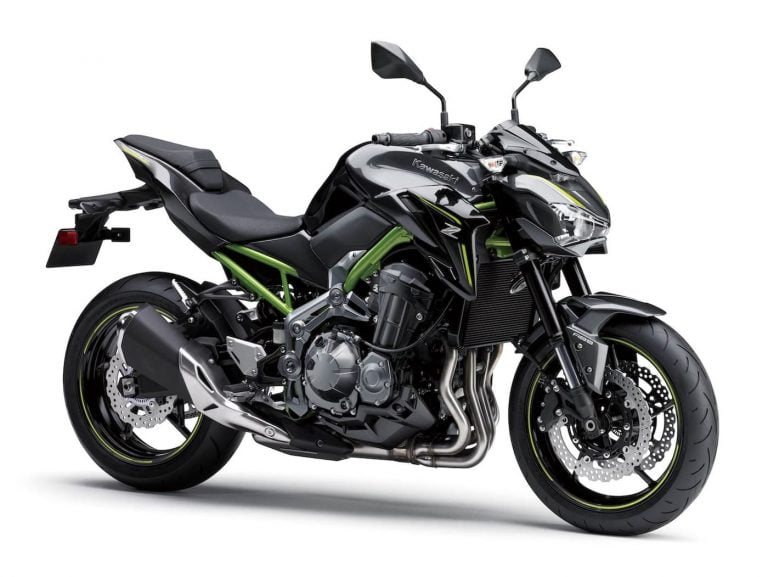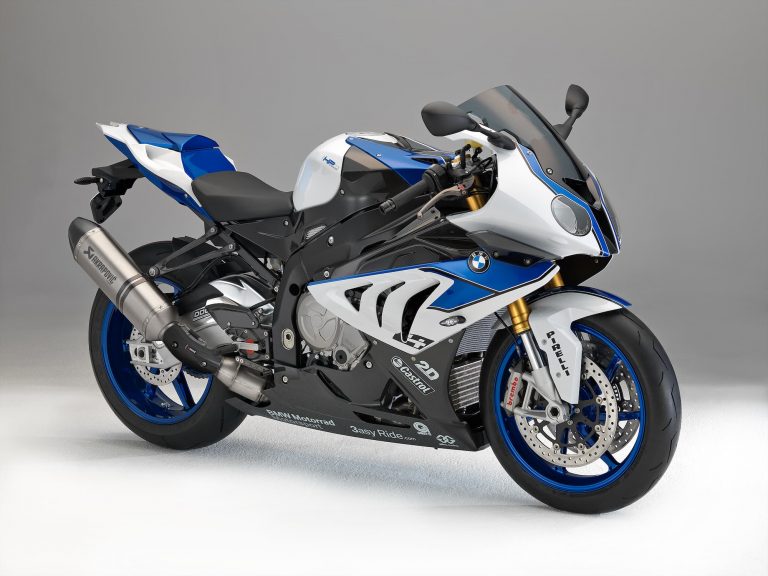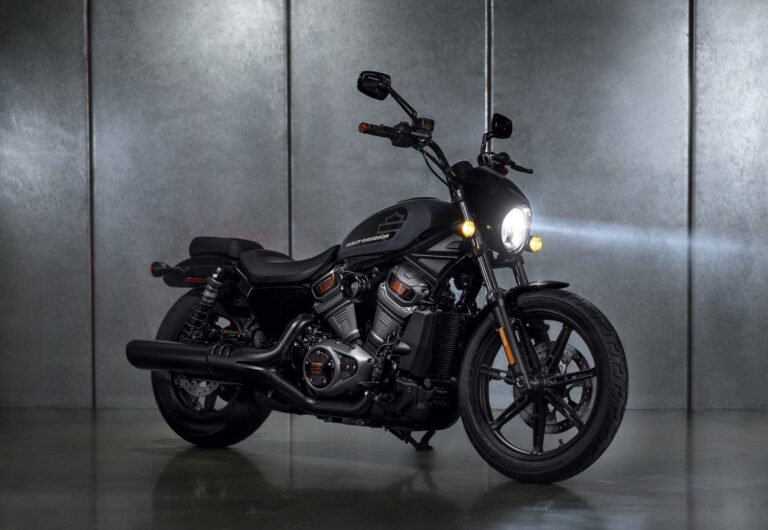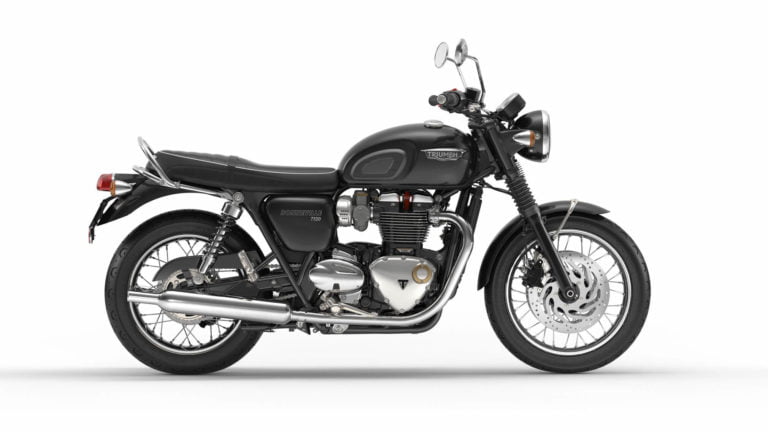Harley Davidson XR1200 and XR1200X (2008-2013) Maintenance Schedule and Service Information
This is the maintenance schedule for the Harley-Davidson XR1200 / XR1200X motorcycles, including guidelines on oil changes, spark plug changes, filters, brakes, and other fluids, from the owner’s manual as well as from a few other online sources.
The Harley-Davidson XR1200 and XR1200X are a closely related pair of high-performance roadsters based on the Sportster platform. But the XR1200 is explicitly a performance motorcycle, with an inverted fork, double disc brakes, rear-set footpegs, greater cornering clearance, and a highly tuned Sportster 1200 motor.
The XR1200X has the same foundation, but with fully adjustable suspension, floating brake rotors and a number of other design elements.
The final drive is still via a 5-speed transmission and belt drive. Still a Sportster!
This site has links from which we earn a commission (which unfortunately nobody can save, not even us). If you appreciate this research work, then please use those links. Thanks.
Service Intervals for the XR1200 / XR1200X
Overall, the Harley-Davidson XR1200 / XR1200X has a simple foundation — an Evo air/oil-cooled motor and a belt drive. Like other Sportsters, the baseline maintenance schedule is:
- 5000 mile / 8000 km maintenance intervals where you have to change the oil and filter, and check everything.
- Every two services, tighten everything up back to torque spec, and lubricate major bearings.
- Every 2-4 years replace fluids, or as needed.
Unlike many other motorcycles, the XR1200 / XR1200X has no required valve service interval, as it has hydraulic self-adjusting lifters.
The belt tension check process is a little different for the XR1200 / X — see that section below.
Despite the high tune, the XR1200 bikes have the same maintenance schedule on paper as other Sportster-based bikes. But because the XR1200 and XR1200X are generally more likely to be ridden hard than other Sportsters (or Harleys in general), it’s reasonable to expect to have to change the oil / fluids more often.
What You Need to Service an XR1200 / XR1200X
Below is what you need to service your Harley-Davidson XR1200 or XR1200X — fluids and other consumable parts.
| Part | Harley-Davidson XR1200 spec |
|---|---|
| Engine Oil | Genuine Harley-Davidson H-D 360 Motorcycle Oil 20W50, or another oil certified for a diesel engine with certification CH-4, CI-4, and CJ-4, preferably (in descending order of preference) 20W50, 15W40, and 10W50. One well-recommended option is Mobil 1 20W-50 V-Twin Synthetic. Note: If you live in a very low climate (where it drops below 40 F / 4 C), use 10W40. |
| Oil filter | Use a Hiflofiltro HF170RC filter. The oil filter wrench part number is 94686-00. |
| Transmission lubricant | Use Formula+ Transmission and Primary Chaincase Lubricant. Two good alternatives are Red Line Primary Case Oil and Amsoil Primary Chaincase Lubricant. |
| Brake fluid | Use only DOT 4 brake fluid, e.g. Castrol DOT 4. The H-D part number is HD-48497-A. |
| Spark plug | Use an NGK DCPR7E or DCPR7EIX spark plug. |
| Brake pads | Use EBC brake pads for better bite and less fade. You need two pairs of FA296HH on the front, and one pair of FA387HH on the rear. This is the same on the XR1200 and XR1200X, per EBC Brakes. |
Maintenance schedule for the Harley-Davidson XR1200 / XR1200X
Below is the service schedule for the Harley-Davidson XR1200 / XR1200X. This comes from the manual and maintenance schedule for all XR Sportster-based bikes, but has been clarified for legibility.
Notes on the maintenance schedule:
- (*) Items marked with an asterisk (oil, filters, controls etc.) should be maintained more regularly if you ride in severe conditions (including high ambient temperatures, dust, rough roads, after storage, short runs, heavy stop/go traffic, or poor fuel quality)
- When there’s a period (e.g. “every year”), observe the earlier of the two maintenance intervals (time or distance).
| mi x 1000 | 5 | 10 | 15 | 20 | 25 | 30 | |
|---|---|---|---|---|---|---|---|
| km x 1000 | 8 | 16 | 24 | 32 | 40 | 48 | Every |
| Standard inspection checklist — perform all items (see below) | X | X | X | X | X | X | Year |
| Engine oil and filter — Replace* | X | X | X | X | X | X | Year |
| Air cleaner — Inspect, clean/replace if required* | X | X | X | X | X | X | |
| Drive belt and sprockets — Inspect (see below) | X | X | X | X | X | X | |
| Primary chain — Adjust | X | X | X | X | X | X | |
| Clutch — Check adjustment* | X | X | X | X | X | X | |
| Controls (Throttle, Brake, Clutch) — Check, Adjust and Lubricate | X | X | X | X | X | X | |
| Transmission lubricant — Replace* | X | X | X | ||||
| Steering head bearings — (A)djust, or (D)isassemble, lubricate, and inspect | A | D | |||||
| Brake fluid — Replace (Castrol DOT 4) | 2 years | ||||||
| Brake pads and discs — Check for wear | X | X | X | X | X | X | |
| Brake system — Rebuild * Front brake lever pin — Lubricate * Brake caliper pins — Lubricate * Brake caliper boots and bushings — replace * Master cylinder pistons – Lubricate * Rubber components in master cylinder and calipers – Replace | X | 4 years | |||||
| Spark plugs – Replace (DCPR7E) Torque: 14 lb-ft / 18 Nm | X | 2 years | |||||
| Steering head bearings — (A)djust, (L)ubricate | A | L | Adjust or Lubricate, alternating every 15K miles / 24K km | ||||
| Front forks — Rebuild (Disassemble, inspect, rebuild, replace oil) | 50000 mi / 80000 km | ||||||
| Rear fork bearings — Inspect | X | ||||||
| Fuel filter — Replace* | 100000 mi (160000 km) | ||||||
| Wheel spokes — Check tightness | X | X | Every 15000 mi / 24000 km | ||||
| Critical fasteners — inspect and tighten – Engine mounts and stabiliser links – Hand control switch housing screw – Upper front stabilizer link to engine bracket mounting screw – Front isolator mounting bolt and nut – Front axle nut – Brake banjo bolt – Rear axle nut | X | X | X | Year |
Standard Inspection Checklist
Below is the standard inspection checklist for the XR1200 / XR1200X. Do these items according to the schedule above.
| Standard inspection checklist for the Harley-Davidson XR1200/XR1200X |
|---|
| Oil and brake lines — Check for leaks/abrasion |
| Front and rear brake fluid — Check level in sight glass & reservoir cover tightness |
| Front and rear brake fluid — Check moisture content |
| Front and rear tires — Check pressure and inspect tread |
| Fuel lines and fittings — Check for leaks/abrasion |
| Throttle controls — Check, Adjust, Lubricate |
| Jiffy stand — Lubricate |
| Brake and clutch controls — Lubricate |
| Electrical equipment and switches — Check |
| Exhaust system, fasteners and shields — check for leaks, cracks, loose or missing fasteners/shields* |
| 12-volt battery – Check terminal torque and connection cleanness |
| Road test — Perform, checking all component and system functions |
Tire sizes and pressures for the Harley-Davidson XR1200 / XR1200X
The XR1200 ships with Michelin Scorcher tires in an 18/17 tire combo.
Below is a table of the recommended tyre sizes and pressures for both models.
| Wheel | Tyre size | Tyre pressure (cold) |
|---|---|---|
| Front | 120/70 ZR 18 | 36 psi / 248 kPa |
| Rear | 180/55 ZR 17 | 42 psi / 290 kPa |
Maintaining the XR1200 / XR1200X’s Belt
Even though the belt drive on the XR1200/X is low maintenance compared to a chain, you still do regularly need to check its condition and tension.
Use a belt tension gauge to measure the belt deflection. Harley-Davidson sells one, but they’re fairly generic low-cost items that you can use on any cruiser with a belt drive — all cruisers (well, the vast majority) are measured using the same 10 lb / 4.5 kg of force, so you can get one on Amazon.
Check belt deflection often — before rides (especially major ones) and at every service. Many owners like to twist the belt. If you can twist the XR’s more than 45 degrees, it’s likely your belt is too loose. (Note: this is not a fool-proof method!)
To check belt deflection, put the motorcycle in neutral and on its kickstand, on a level surface. On the XR bikes, find the point midway between the idler wheel and the rear sprocket. (Most Sportsters don’t have an idler wheel — only the XR1200 / XR1200X in this generation do.) Use the belt tension tool to press up on the belt, and measure the deflection with a ruler.
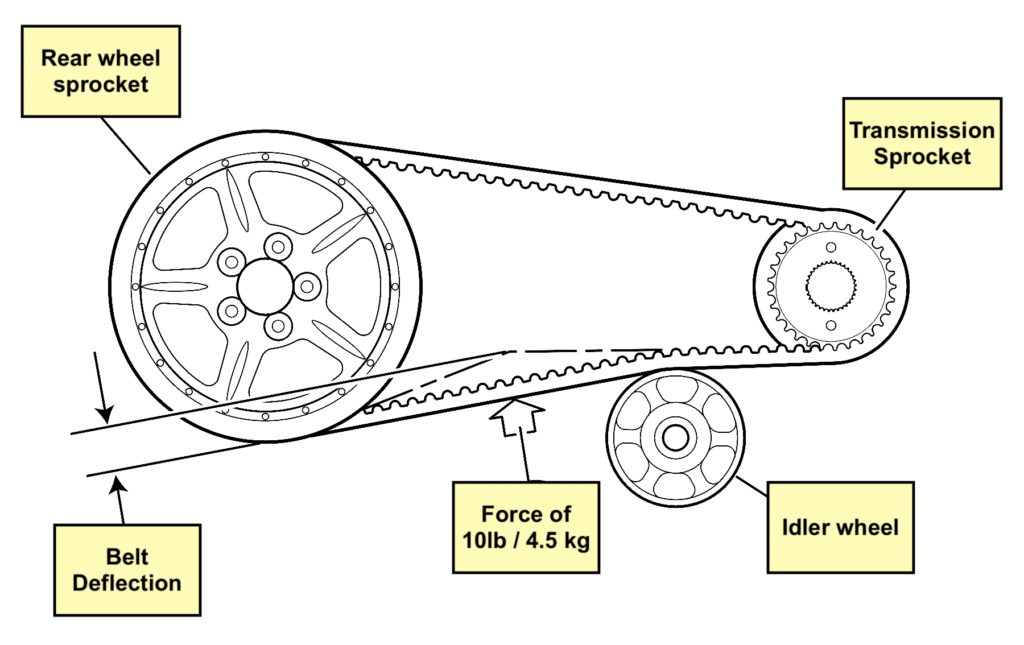
Target deflection for the XR1200 & XR1200X: 1/4 – 3/8 inches or 6.4-9.5 mm (Different from most Sportsters)
You can measure the markings on the XR1200 bikes on the front of the debris deflector. Each gradation is 1/8 in (3.2mm).
If the tension is out of spec, you need to adjust it. The manual recommends going to a mechanic, but you can follow this procedure.
- Loosen the axle lock nut. You will probably need a breaker bar and an appropriately sized socket.
- Remove the caps on the adjuster nuts (if the cap is still there)
- Loosen the adjuster nuts with a wrench by the same amount on both sides carefully, going 1/4 or 1/2 a turn at a time.
- Continuously measure the belt tension, seeing if it has reached spec.
- When the belt tension is reached, tighten the axle nut to 95-105 lb-ft (129-142 Nm). Use an anti-seize lubricant on the axle before tightening.
About the Harley-Davidson XR1200 and XR1200X
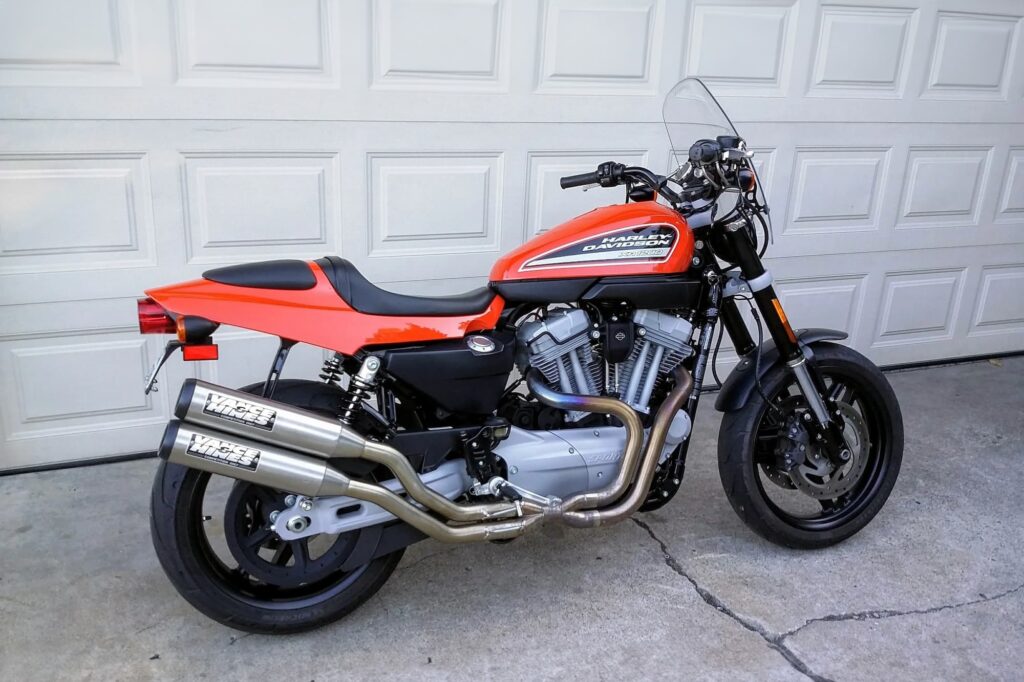
Harley-Davidson launched the XR1200 in the 2009 model year. It was an attempt by the brand to capture a different demographic — people who actually may emphasize the “sport” in Sportster and use their motorcycles for spirited jaunts on twisty roads. Not that other Harleys aren’t capable… but there was a widening gap in outright performance between a stock Sportster and many other naked bikes.
Enter the XR1200. It’s built on the same platform as the XL Sportsters, but with a number of improvements, many of them significant.
Firstly, the suspension. The Harley-Davidson XR1200 has a non-adjustable Showa inverted fork up front and H-D twin shocks at the rear, adjustable only for preload. (Higher spec suspension would come on the X version — see below.)
The XR1200’s suspension has good travel for a Sportster. Even though it is mostly non-adjustable, the suspension is set up to provide a much firmer ride, reducing wallowing or unwanted dive.
Secondly, braking. The XR1200 has twin disc brakes — a rarity on a Sportster (or any Harley-Davidson). The brakes are Nissin four-piston sliding calipers on 292 mm discs.
Finally, the engine. Harley didn’t leave the engine untouched. They gave it performance camms (from the Buell XB), a higher compression ratio, a performance exhaust, and new throttle body. The engine’s cylinder heads has extra cooling, with external oil lines that pass through a small oil cooler.
The sum total is a claimed power peak power output of 90 hp at 7000 rpm. That’s quite high-revving for an air/oil-cooled Harley!
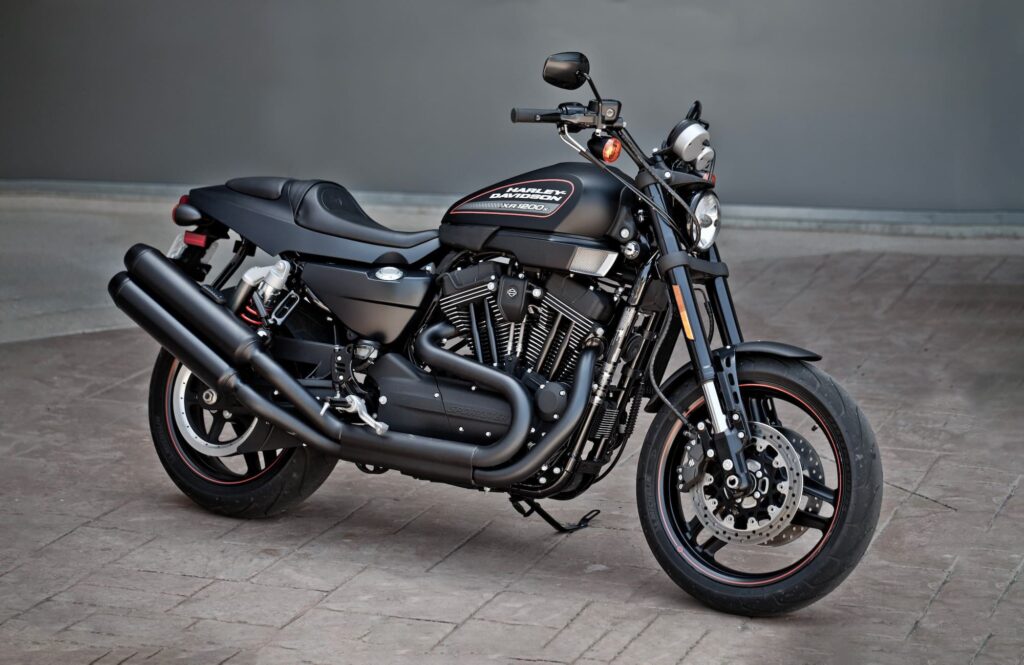
Not everything about the XR1200 series is pure sport spec. The brake calipers aren’t radially mounted. The wheels don’t have a standard 17-inch front and rear sizing. And finally, the XR1200 / X weighs just shy of 270 kg / 600 lb with the tank full, which is not sporty in anyone’s book.
Still, it’s bags of fun. The XR1200 — and especially the X — has a loyal fan base. Few of them are sold because they’re an ageing classic, reflective of a brief experimental phase in the Evo Sportster’s history. Plus, the X wasn’t even sold everywhere, which makes it quite unique.
The XR1200 was popular in Europe and places like Australia, where the target market was. It was less popular in the US among the Harley-Davidson faithful, but it has a loyal market of niche supporters. The XR1200’s follow-up, the XR1200X, was never sold in the US.
The XR1200X would be the last sporty Sportster that Harley-Davidson would release for a while. Harley did bring a little of it back with the somewhat sporty XL1200CX Roadster, but the next high-performance bike with the Sportster name attached would be the liquid-cooled 2021 Harley-Davidson Sportster S.
Reference — Manual Screenshots
The above info came from the owner’s manuals for the 2009 XR1200 and the 2013 XR1200X (capping both ends of the production cycle). Some supporting information came from posts on xr1200ownersgroup.com and from screenshots of the service manuals.
You can download the owner’s manuals from Harley-Davidson directly here (login required).
